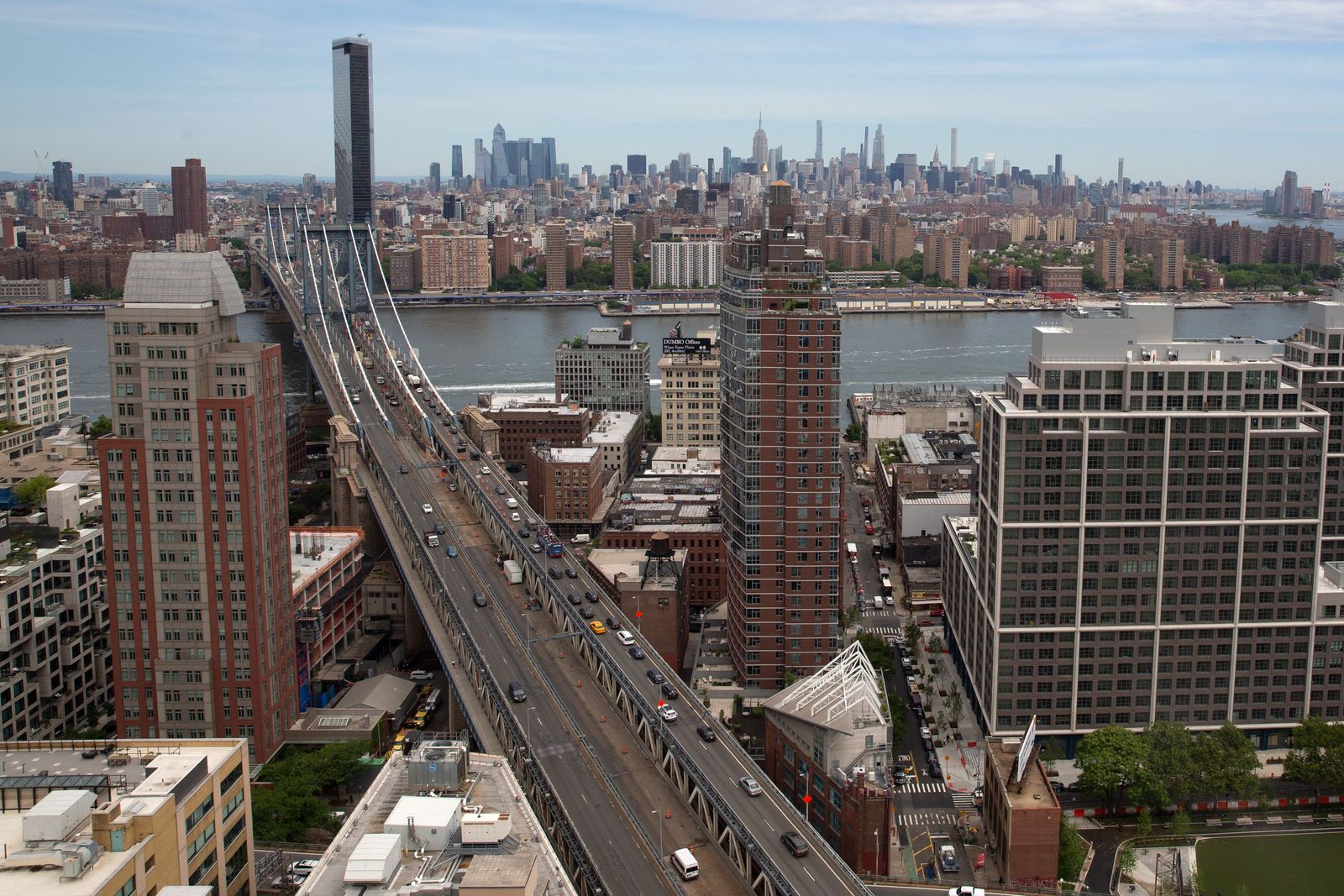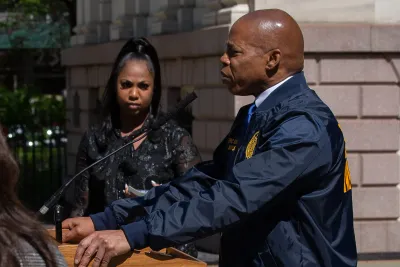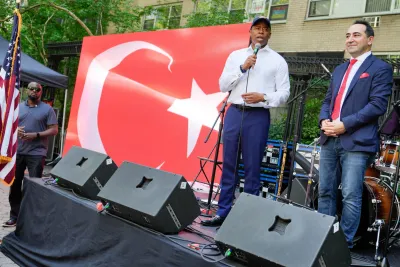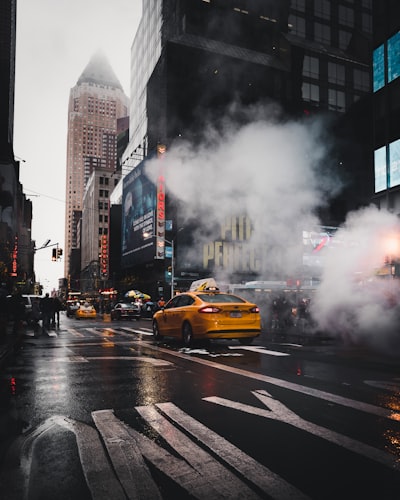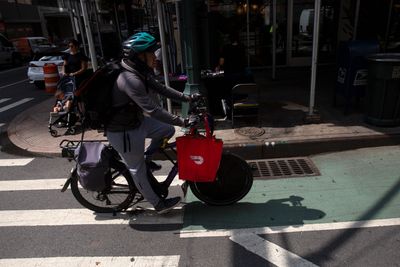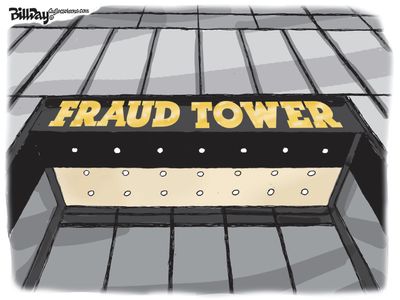Jose Martinez, The City

This article was originally published on May 12 6:01am EDT by THE CITY
New York leaders have long flirted with the idea of tolling vehicle traffic into Manhattan’s central core as a way of raising billions for mass transit improvements.
Now, the decades-long call for so-called congestion pricing is closer than ever to becoming a reality after the release Friday of a key document, thousands of pages long, that starts a 30-day clock for federal officials to make their final call on the tolling idea.
The latest “environmental assessment” report from the MTA and state and city transportation departments nails down key details on how the plan will work, including: a once-per-day cap on charges for taxis and for-hire vehicles; a 50% toll reduction in the wee hours of the morning; funding for diesel-to-electric truck conversions, and even local park renovations.
The assessment also comes with a draft “Finding of No Significant Impact” (FONSI) by the Federal Highway Administration, which means the officials don’t believe negative impacts of the changes will outweigh positive benefits.
“I know that some people will use words like ‘cash grab,’” MTA Chair and CEO Janno Lieber said on Thursday ahead of the document’s release. “But traffic, air quality, health, safer streets, better transit — that’s what’s in this for New Yorkers and for the whole region.”
It’s a significant milestone for the long-stalled plan to toll vehicles south of 60th Street in Manhattan in order to raise billions of dollars for the transit system, to be spent on new subway cars and signals, accessibility upgrades, electric buses and expansion of the Second Avenue Subway.
The tolling plan — which would be the first of its kind in the country — would charge vehicles up to $23 a day in an effort to reduce the number of cars, trucks, vans and buses entering Manhattan by 15% to 20%, according to a study released last August that outlined several tolling scenarios.
It also aims to fight pollution by reducing the vehicle miles traveled within the Manhattan central district by up to 5%, and to cut the number of vehicles entering the area by 10%.
“Ladies and gentlemen, we cannot drive our way out of the climate crisis,” Julie Tighe, president of the New York League of Conservation Voters said Friday at a Union Square rally for congestion pricing. “We need fewer cars on the road, we need less greenhouse emissions coming from our transportation sector — we can do that by discouraging the use of automobiles in one of the most horribly congested areas in the country.”
The state legislature approved the outlines of the plan in 2019, but its rollout has been delayed repeatedly. The latest step begun Friday sets up a 30-day period in which the fine details are available for public review before the FHWA makes its final decision.
If the feds then give the green light, the MTA can start building out the system on the streets, for which it has already hired a contracting firm, the Tennessee-based company TransCore.
Tolling could begin by next spring, according to Gov. Kathy Hochul, with tolling equipment being designed, built, tested and activated over the course of nearly a year.
The proposed congestion zone exempts the FDR Drive, West Side Highway and the Battery Park underpass linking the two highways.
Transit officials are bracing for more criticism of the plan, which New Jersey officials have protested.
“What we’re up against is the head-in-the-sand coalition of people who say, ‘Let’s not deal with our problems, let’s pretend climate change doesn’t exist, let’s stand still like a bus in the middle of traffic in Midtown Manhattan, ” Lieber said Friday at the Union Square rally.
In the Details
As part of the plan, the MTA and the city and state transportation departments will commit to $207.5 million in measures aimed at mitigating the effects of pollution in neighborhoods that suffer from it most.
Those include: reducing tolls by 50% from midnight to 4 a.m; expanding the replacement of diesel trucks in neighborhoods where truck traffic is expected to increase; upgrading electric truck-charging infrastructure; renovating local parks; retrofitting diesel-burning transport refrigeration trailers at the Hunts Point Produce Market with cleaner vehicles; expanding the city’s asthma case management program in schools; and planting roadside vegetation to improve air quality near roads.
“COVID exposed just how vulnerable New Yorkers are to respiratory issues caused by air pollution,” Danny Pearlstein, policy director for the transit advocacy group Riders Alliance, told THE CITY Thursday. “The program itself, coupled with mitigation, will bring about the biggest reduction in half a century since the Clean Air Act required catalytic converters in cars.”
The new commitments come in addition to earlier plans to electrify bus depots in The Bronx and Upper Manhattan, to provide a tax credit for low-income residents of the central business district who make less less than $60,000 a year, and to cut the $10 E-Z Pass tag deposit fee for drivers without a credit card backup.
Under the latest version of the congestion pricing plan, drivers of taxis and for-hire vehicles will not be charged more than once per day. That’s a departure from the environmental assessment released last August, which had raised the possibility of tacking up to $19 in new fees onto every metered cab trip south of 60th Street.
/cdn.vox-cdn.com/uploads/chorus_asset/file/23615504/060822_traffic_3.jpg)
At that time, drivers and advocates said the potential fees would inflict further damage on a long-struggling industry that already collects congestion surcharges — since 2019, $2.50 is tacked on to all yellow taxi trips south of 96th Street, with $2.75 per trip for green cabs and for-hire vehicles, or FHVs.
In addition, a 50-cent-per-ride MTA surcharge on all yellow and green cab hails has, since 2009, generated about $750 million for the transit agency, according to the TLC.
The head of the New York Taxi Workers Alliance argued yellow cabs have “paid their fare share” since 2009, adding that the group plans to fight the once-a-day toll.
“This is one more cut from drivers’ income,” Bhairavi Desai told THE CITY on Friday. “It gets to the point where if you slice the pie so much, you get to the crumbs and we’re sick and tired of eating crumbs.”
The August assessment pointed out that additional tolls could push some drivers, who it noted “largely identify as minority populations,” out of work.
One owner of a taxi garage in Long Island City that’s been in business for more than half a century previously told THE CITY he considered the earlier proposals “a gun to our head.”
MTA chief Lieber said, “We all know that the yellow cab industry has been struggling and that, in combination with some other variables, led us to say we’re going to only charge the taxis and FHVs once per day even if they’re going in and out of the congestion zone.”The existing fees generated more than $1 billion for the MTA in their first three years, according to the Taxi and Limousine Commission.
Lyft, the app-based for-hire vehicle service, put out a statement criticizing the tolling plan as “an infeasible logistical nightmare” because rideshare companies won’t know if a driver has already passed through the congestion zone by giving a ride on another platform.
“It would fall on the driver’s shoulders to pay the fee,” the statement read. “Instead of burdening drivers further, the MTA should acknowledge that our industry has for years already paid them a congestion fee.”
The final determinations on tolls and system functionality will be made by the Traffic Mobility Review Board (TMRB). The six-person panel — made up of five appointees selected by the MTA and one by Mayor Eric Adams — will be able to recommend policies related to possible discounts and exemptions that go beyond the commitments in the environmental assessment.
Officials said the TMRB will have the power to mix and match elements of the various tolling scenarios, but must follow the guidelines for mitigation measures focused on environmental justice communities.
If congestion pricing is adopted, New York City would be following the lead of European cities like London and Stockholm, which saw carbon dioxide emissions drop significantly after rolling out similar policies.
“For the city and its businesses to thrive, New Yorkers need reliable public transit and streets that aren’t constantly snarled by traffic,” Steven Rubenstein, chairperson of the Association for a Better New York, said in a statement Thursday. “Congestion pricing will make our region more economically competitive, sustainable, and livable.”
THE CITY is an independent, nonprofit news outlet dedicated to hard-hitting reporting that serves the people of New York.
